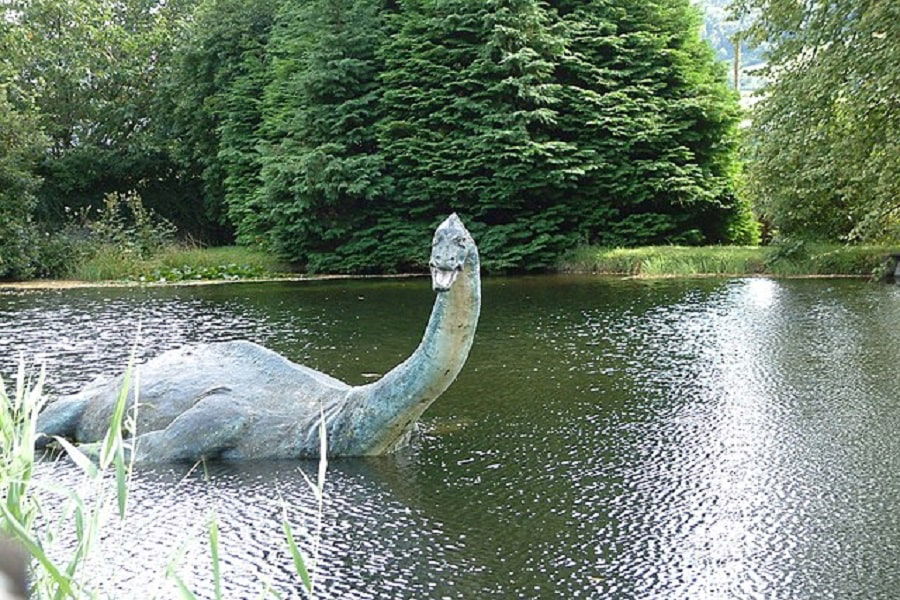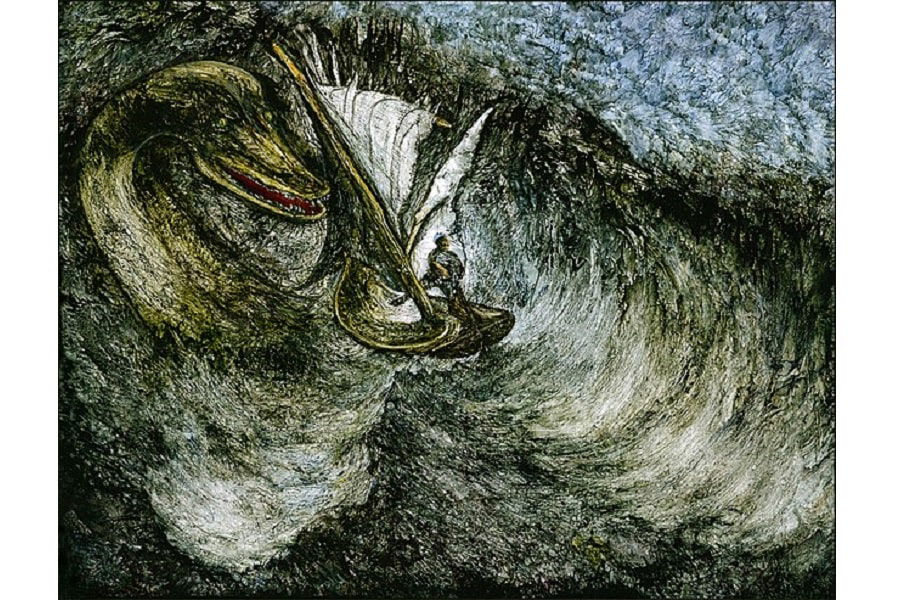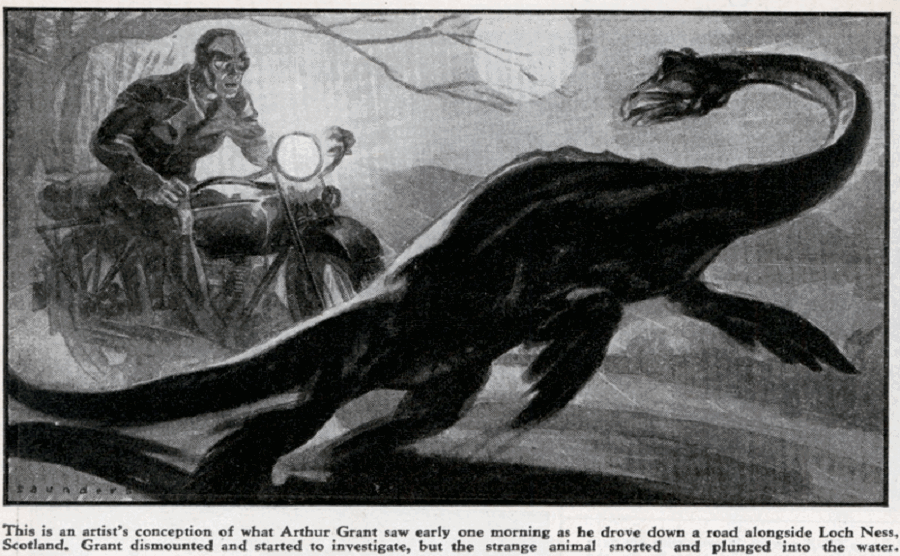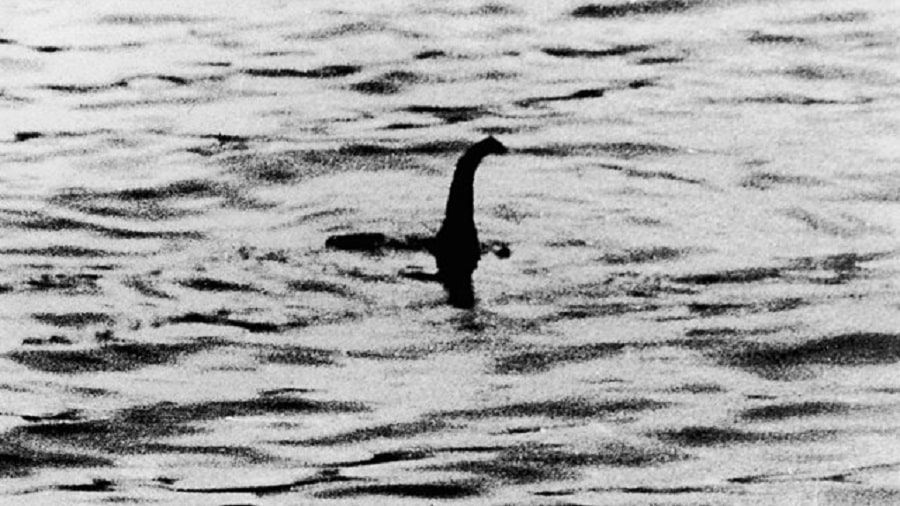The Loch Ness monster, or Nessie as she is popularly known, is a mythical creature believed to dwell in the waters of Lake Ness in Scotland. Scotland and Celtic mythology is full of the fantastical. There are numerous stories of the Celtic gods and goddesses or various Irish and Scottish heroes and creatures. But we do not generally believe these stories to be true. So what of the long-necked, hump-backed animal that is said to live in the lake? What of all the pictures people have claimed to take of Nessie? Is she real or not?
Table of Contents
What is the Loch Ness Monster? Is Nessie a Dinosaur?

While many skeptics questioned the monster’s existence, others set out to discover what exactly people were seeing. What could the monster be? Was it an ancient, prehistoric being? Was it a hitherto undiscovered species?
People have come up with all kinds of explanations for the Loch Ness monster. Some claim that it is some kind of killer whale or ocean sunfish or anaconda. Since scientists originally believed Loch Ness was a saltwater lake, speculations of whales and sharks abounded. This is now dismissed as an impossible idea, given that the lake holds fresh water.
In 1934, 1979, and 2005, people came up with the theory that it was a swimming elephant that escaped from a nearby circus. Each time, the people claimed this as an original theory. These implausible ideas are clearly the work of conspiracy theorists familiar with the legend.
Over the years, the idea that Nessie is a plesiosaurus has become popular. The long-necked beast from people’s accounts certainly bears some resemblance to the extinct marine dinosaur. A fake photograph from the 1930s gave further credence to the idea. This photograph ‘proved’ to several believers that Nessie was real.
The idea that Nessie was a prehistoric reptile took root in people’s imaginations. In 2018, several scuba divers and researchers conducted a DNA survey of Loch Ness to find out what lived there. DNA samples did not indicate the presence of any large reptile or fish like sharks. However, evidence of eels was found. This led to theories that the monster was an oversized eel of some kind.
No DNA of otters was found either. However, many scientists have concluded that the thing seen by Grant and photographed by several people may be an overly large otter. This would raise the question of how such an unusually large eel or otter could have such a long lifespan.
The Legend of Loch Ness
‘Loch’ means ‘lake’ in the Scottish language. And the legend of a monster living in Loch Ness is a very old one. Local stone carvings by Picts from ancient times have been found, depicting a strange-looking aquatic beast with flippers. St. Columba’s 7th-century CE biography has the first written mention of the legendary creature. It tells the story of how the monster bit a swimmer in 565 CE and almost went after another man before St. Columba (an Irish monk) ordered it away with the sign of the Christian cross.
It was in 1993 that the legend became a widespread phenomenon. A couple driving down the road adjacent to Loch Ness claimed that they saw an ancient creature – like a dragon – cross the road and disappear into the water. It was reported in a local newspaper. Since then, more than a thousand people have claimed to see the Loch Ness monster.
READ MORE: Celtic Mythology: Myths, Legends, Deities, Heroes, and Culture
The lake is both large and deep. It is at least 23 miles long, 1 mile wide, and 240 meters deep. Its outlet is the river Ness and this is the largest volume of fresh water on the British Isles. The size of the loch makes rumors of sightings of the Loch Ness monster more common. It is hard to refute such claims as searching the whole lake is an arduous task. As per several ‘eyewitness’ accounts, the monster is a 20 to 30 feet long creature with the flippers of a dolphin and a rather small head.

Land Sightings
If the monster does exist, it apparently does not confine itself to just Loch Ness either. The Loch Ness monster has been seen on roads and hillsides along the lake as well. In 1879, a group of schoolchildren are said to have seen it ‘waddling’ down the hillside towards the Loch.
In 1933, a couple called Mr. and Mrs. Spicer said they saw a large gray creature with a long trunk lurching down the road toward the lake. George Spicer said that it looked like a ‘scenic railway.’ When they realized it was a living thing, they watched it move away in horror and fright. The plants and vegetation in its way were later reported to be flattened as if a very heavy, large body had passed over them.
The year following Mr. and Mrs. Spicer’s sighting, a veterinary student called Arthur Grant almost crashed into the creature on his motorbike. He was traveling from Inverness and noted the large body, long neck, small head, flippers, and tail of the animal. He said it was unlike anything he had ever seen before. It quickly disappeared into the water, frightened by the motorbike.
READ MORE: Who Invented Water? History of the Water Molecule
Since then, there have been several land sightings of the creature, including an investigation by a big game hunter called Marmaduke Weatherell. The beaches below Urquhart Castle are said to be one of the monster’s favorite spots. Land sightings, clearer than water ones, seem to hint at Nessie looking like a plesiosaurus. But other descriptions liken the creature to a camel or even a hippopotamus.

‘Witness’ Accounts
There have been many sightings of the Loch Ness monster. Accounts from these eyewitnesses have not yielded any conclusive results. The popular idea of the Loch Ness monster having a very long neck is not supported by 80 percent of these claims. And only one percent of the reports claim that the monster is scaly or reptilian in looks. So it can be concluded that it really is not a prehistoric reptile.
What people think of as a ‘sighting’ of Nessie may just be a trick on the eyes. Phenomena like wind effects or reflections, boats or debris in the distance, or any kind of aquatic life or vegetation mats could be mistaken for the monster. This is supported by the very different accounts of what the creature looks like. We must also not forget that many of these ‘witnesses’ are very familiar with the legend and may have only been trying to get some attention and fame.
Why is Nessie a Myth?
There are many logical reasons why the Loch Ness monster does not actually exist. Any such large air-breathing creature would have needed to appear on the surface frequently. There would have been many more sightings than have been reported. After all, no one denies the existence of whales and dolphins, even though the seas and oceans of the world are much larger than Loch Ness.
Secondly, DNA samples have revealed no signs of such a large and unknown reptile in the waters of the lake. Even apart from that, Loch Ness is much younger than the last time dinosaurs walked the earth. Unless this was a Jurassic Park situation happening naturally, it is quite impossible for any remnants of dinosaurs to exist in the lake.
And if the beast did exist, how has it survived for so long? Does its lifetime span centuries? No single creature like this can possibly exist. It would have needed a large population to reproduce subsequent generations.
Like leprechauns and banshees, or maybe even Celtic gods and goddesses, Nessie is a product of people’s overactive imaginations. There is no evidence that such a creature exists or ever existed. Human psychology is fascinating. The fantastical is so attractive to us that we grasp at straws to believe in it. The creature is certainly an intriguing legend but we cannot claim that it is more than that.
False Evidence
Finally, the most convincing ‘evidence’ for the Loch Ness monster has been proven to be a hoax. In 1934, an English physician named Robert Kenneth Wilson supposedly photographed the creature. It looked exactly like a plesiosaurus and sparked a sensation worldwide.

In 1994, it was proved that the photograph was fake. It was actually the photograph of a roughly molded plesiosaurus floating on top of a toy submarine. Made of plastic and wood, it was made to fool viewers of the photograph into believing that a mysterious animal really did inhabit the waters of the lake.
Despite the fact that the photograph has been exposed as being fake, people continue to believe in the existence of such a monster even now.